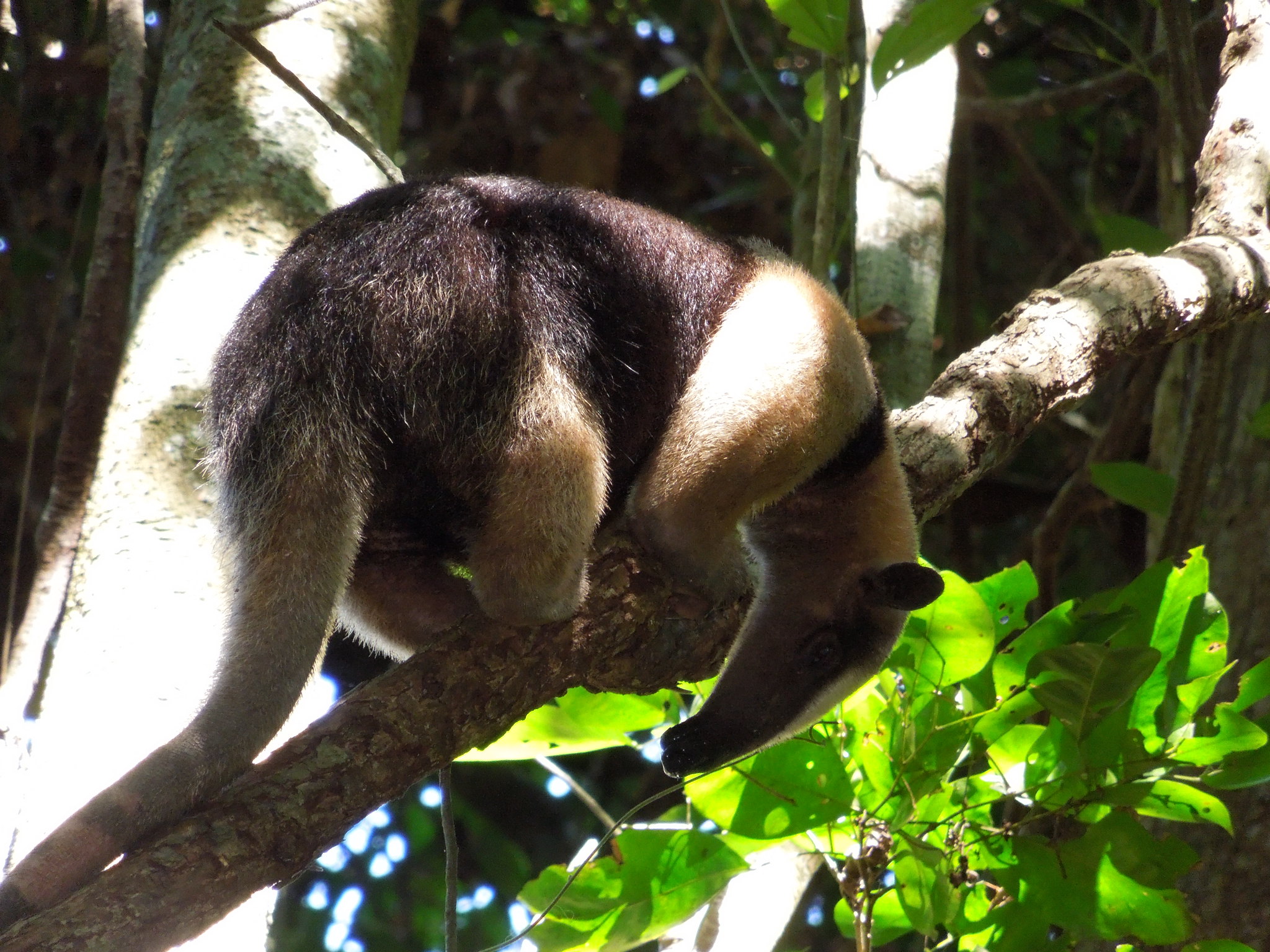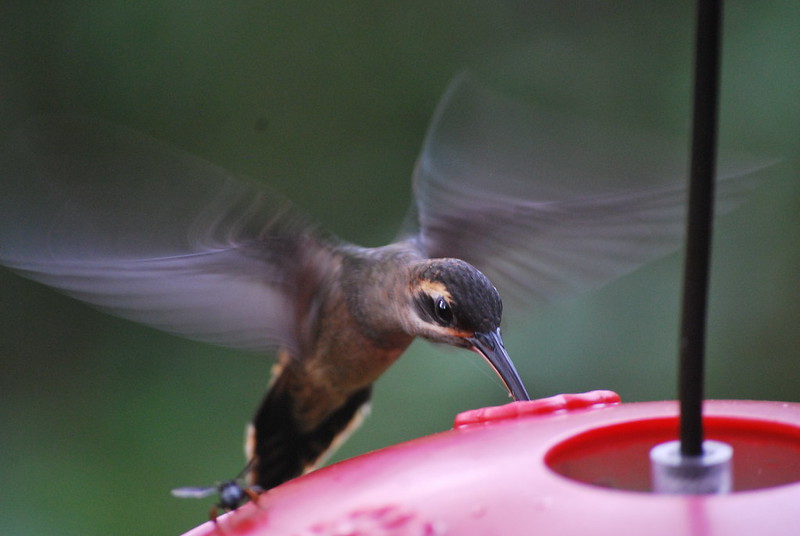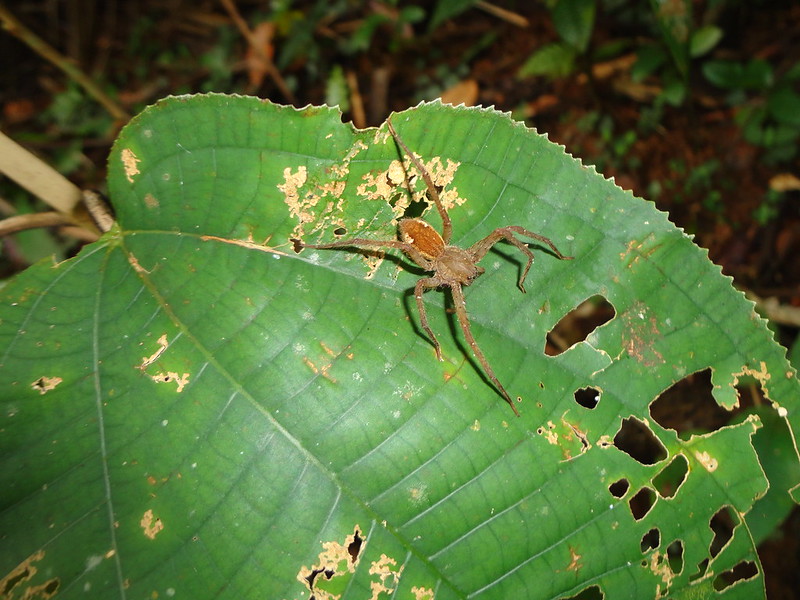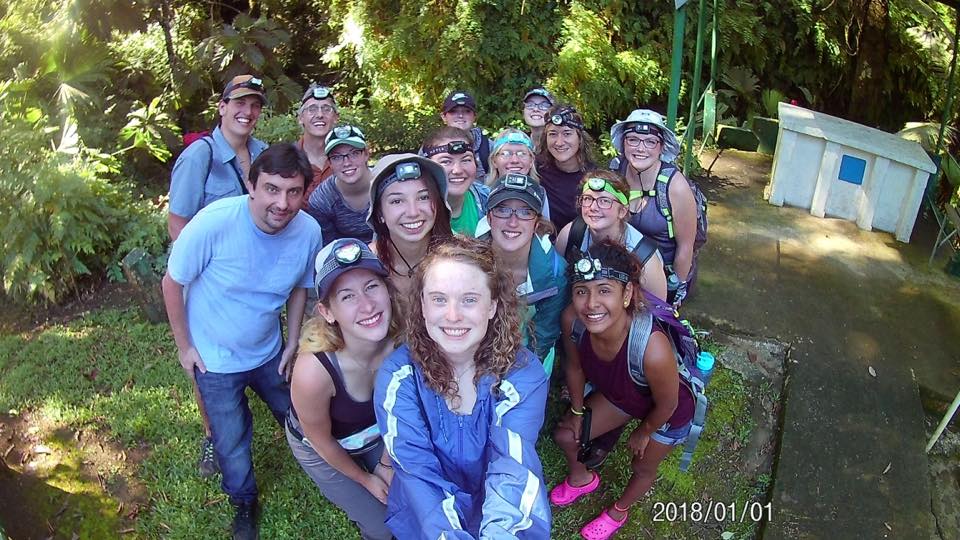Travel Course
In addition to traditional courses, the Cofrin Center for Biodiversity and Natural and Applied Science Department offers a unique research and service learning course that focuses on tropical biology in Panama



Every year, a group of students and faculty travel to Panama to participate in a variety of exciting research projects in collaboration with the Smithsonian Tropical Research Institute. This course is designed for junior or senior undergraduate and graduate students with previous biodiversity related research, coursework or travel experience. Rather than visiting several locations in Panama, students and faculty spend several days at 3 or 4 locations in order to collect data for research projects. Reearch projects differ each year and is dependent on the faculty who are leading the course. In alternate years Saint Norbert College joins UW Green Bay in a collaborative research course.
Past projects: acoustic monitoring of tropical birds and bats in pristine tropical rainforest, fossil collection in the Panama Canal Zone with a team of Smithsonian paleontologists, testing of a new rapid assessment protocol to sample arthropods in lowland rainforest and cloud forest, assessment of spider communities in mangrove habitats, monitoring marine organisms in a Caribbean coastal ecosystem, collection and identification of fish species and their parasites in tropical rainforest streams.



Fees and Applications
Application and acceptance for this course is competetive. Students interested in the course are encouraged to take ecology and one or more biology field courses. Interested students should contact the Biodiversity Center to find out more about the application process, as it may change depending on the year. In general, students will be expected to provide current transcripts, complete an essay, and provide letters of recommendation when they apply. Students must have a current passport at the time of their application. Application deadlines are usually in late May.
Students should expect to pay between $2000 and $2500. Student fees as well as costs for equipment are subsidized by The 1923 Fund. The 1923 Fund is an active supporter of 3 participating institutions and has long been interested in biodiversity related issues.
Conditions and Locations
Locations are dependent on the research projects that will take place. Depending on altitude, temperatures can vary from between 50ºF and 90ºF. Unlike countries in temperate regions, Panama does not experience highly variable seasons marked by changes in temperature. Instead, Panama 's seasons are divided into wet and dry. The course will take place during the beginning of the dry season, which usually begins around mid to late December. Around this time, strong northeasterly winds known as “trade winds” begin to blow and little or no rain may fall for many weeks in a row. Daytime air temperatures increase slightly to around 86-88ºF, but nighttime temperatures remain around 72-73ºF. Relative humidity drops throughout the season, reaching average values as low as 70%. Of course, temperatures will be lower at high elevation in the cloud forest.
- Comfortable lodging is included for the duration of the program.
- Most meals are provided.
- The research schedule is busy, but there will also be opportunities to take in the sights and to relax.
- Recommended travel vaccinations are available at the Centers for Disease Control
Gamboa
Gamboa is the main housing and research location. It is a small town located 30 km north of Panama City on the east bank of the Panama Canal, north of the Chagres River. It was originally part of the infrastructure of the Panama Canal providing housing for Canal personnel and their families. Participants stay in a former school building that STRI has converted to a dormitory facility for field courses that use Soberania National Park and nearby sites.
Participants will likely be developing projects along Pipeline Road, 17+ km corridor that extends into Soberania National Park (Parque Nacional Soberania, or PNS) from Gamboa Township. This road is considered to be one of the best birding locations in all of Central America, if not the world. The PNS extends for a minimum of 7.5 km in three directions from Gamboa and is entirely covered by tall tropical forests. It has been protected as a National Park since its establishment in 1979. There are 525 species of birds, 105 species of mammals, 55 species of amphibians, and 79 species of reptiles known in the park.
At the Gamboa Field Station, STRI provides laboratories and accommodations for researchers who work at the 22,000-hectare Soberania National Park and nearby STRI facilities. The park is a protected area containing a wide variety of forest and freshwater habitats, administered by Panama’s National Authority for the Environment (Autoridad Nacional del Ambiente, or ANAM).
Some of the species participants may get to see include black-throated trogons, golden-collared manakin, white-bellied antbird, purple-throated fruitcrow, and blue cotinga. Rarer old-growth species include yellow-eared toucanet and crimson-bellied woodpecker. Participants may also see other vertebrates like anteaters, howler monkeys, white-faced capuchins, Geoffroy’s tamarin, green iguanas, agoutis, coatimundis, or two- and three-toed sloths.
